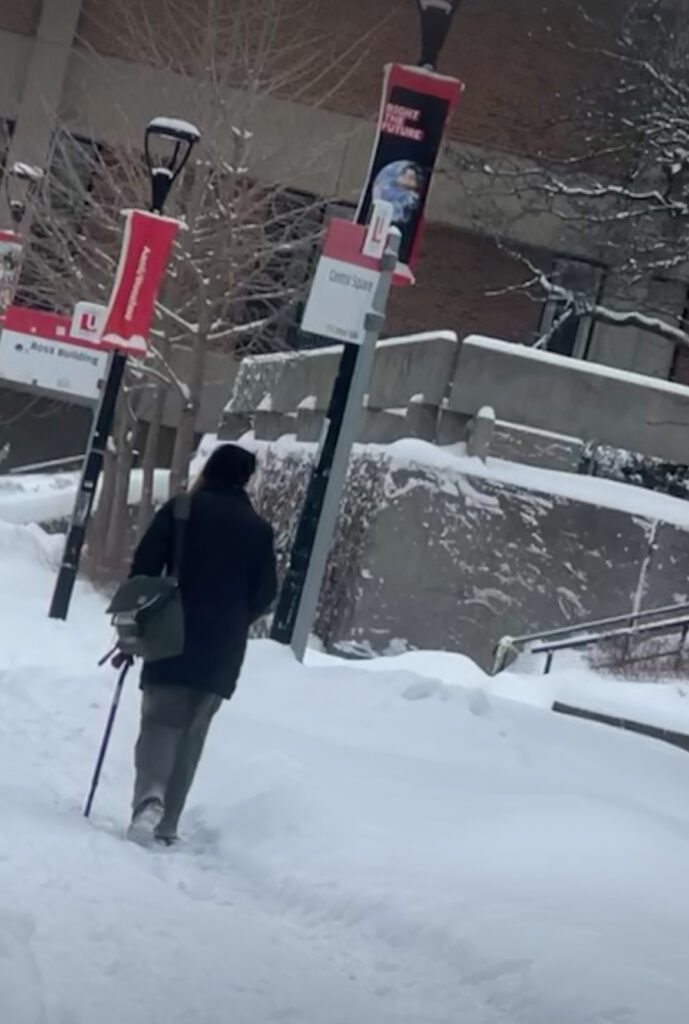
Why are so many sidewalks at York University still covered in ice and snow?
Because we simply don't have enough employees and equipment to get the job done.
What staff we do have has been working really hard to make the walkways and building entrances safe, but there is simply too much ground to cover and not enough boots on the ground.
As we found at the Health and Safety Executive Council meeting last week, a large portion of the snow removal work is done by private contractors (apparently) via bids like this one. The 2024 "buy-outs" for staff have further gutted the employee ranks, including among our Facilities personnel. This has had a negative material impact on critical services like snow removal.
Again: private snow clearing contracts tried here at York and they failed. Just like they failed for the City of Toronto.
The result is that we simply don't have enough people to do critical work like clearing the snow. And that impacts all of us. This year the University decided to keep the doors open even when the sidewalks between buildings were covered in a thick layer of snow.
Even during Reading Week, many of the sidewalks were still covered in snow.
For our community members with mobility issues (like the person in the photo here) and for community members who commute to the University every day, management at YorkU failed to prepare for the snow storm. They failed you.
Snow clearing is not a nice thing to have -- it's critical and we cannot trust private contractors to do it. Management needs to take it seriously -- and to pay for it with serious money and serious personnel and serious equipment.
I grew up in Québec City. I've lived in Montréal and Edmonton. I know what it's like to live in cities that take snow clearing seriously. Toronto, in general, and YorkU in particular, has a lot to learn about how to design and run spaces like universities in a manner that respects and understands Winter. We need to stop designing and running our spaces as if it's Summer all the time.
We can do better. We should do better.
The Possible Solutions?
I have three suggestions for what we need to do.
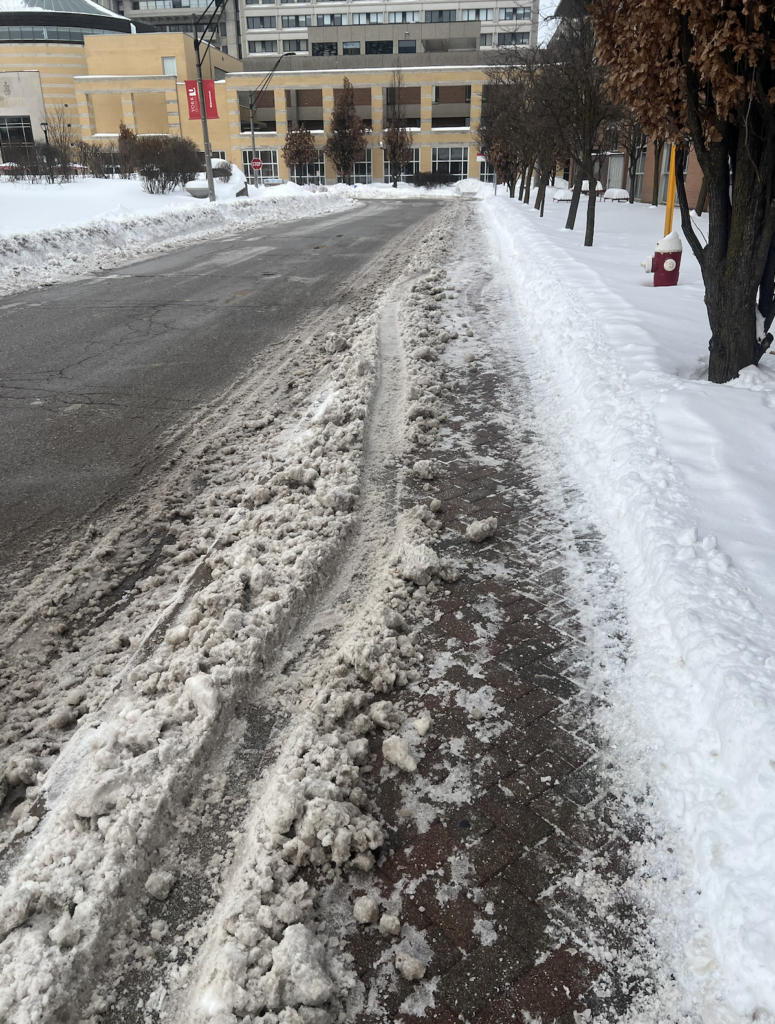
First, we need to hire back more unionized Facilities staff. Not more managers. More boots-on-the-ground people. People who like working at York. People who feel as if they're part of the community. People who feel a responsibility towards our students and fellow employees. Contractors don't care -- clearly.
Again, I want to drive home this point. We need real employees doing the work. Contracting out this kind of work has failed. It failed for York and it failed for the City of Toronto.
One more time, for the people in the back: we need to pay employees to do the work. We need to pay them fair wages. We need to pay them overtime when emergencies happen (like giant snow storms). We need to give them benefits. We need to make sure that they love working here so that, when we really need them to step up, they will.
Second, we need to buy more multi-purpose grounds equipment. Equipment that can be used for snow removal in the winter and other tasks in the Summer, Spring and Fall. Not golf carts.
Third -- and this will be the controversial one -- shut down and densify many the roadways and parking lots at York. They cost money to maintain ... this is money that could be better spent on equipment and personnel. The current parking lots aren't arranged to be used nearly as efficiently as they could be. The Vari Loop, for instance, no longer used for GO buses, is unnecessary, and when we spend money snow clearing it we're just giving taxi and Uber drivers a place to park and drive the wrong way. Service vehicles that use this roadway should be directed to loading docks like that on the west side of Central Square.
Turn the Vari loop into pedestrian-friendly green space. TMU did this years ago. I was there when the work started and all of you can go down to the Dundas Square area and see it for yourselves.
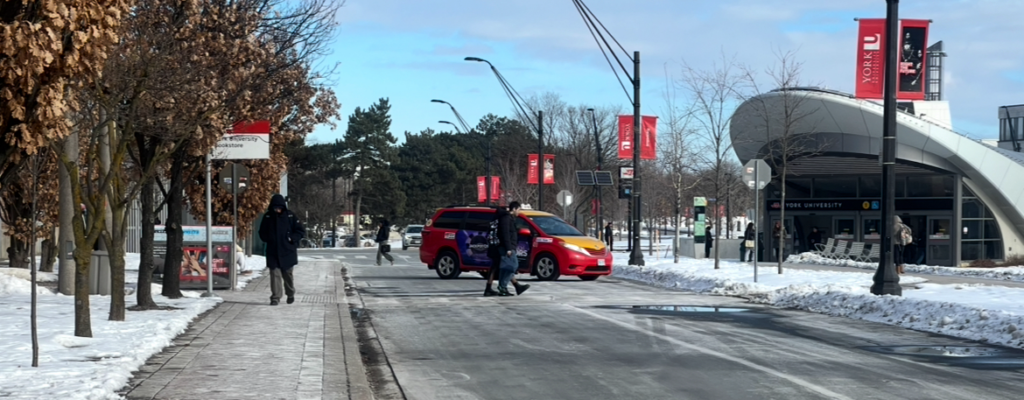
And four lanes at the east entrance of the Keele campus? It's just giving licence to people to drive the wrong way, speed dangerously and park without paying. We don't need any of that. There are plenty of examples like this all over the University.
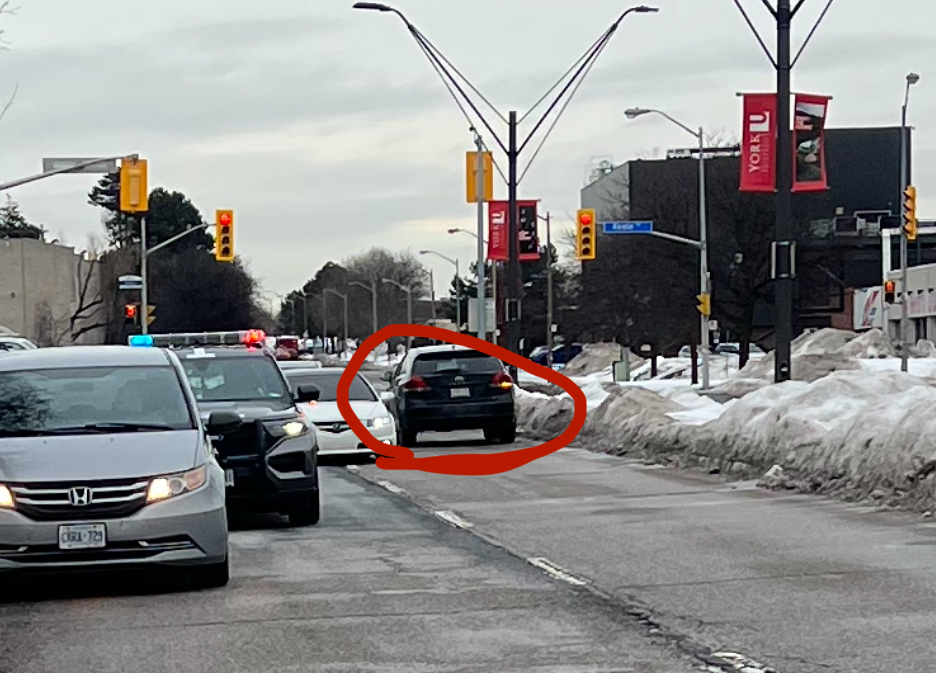
For those of you who don't think that this can be done, think again. Every year our Facilities teams shuts down walkways all over the University, like this:
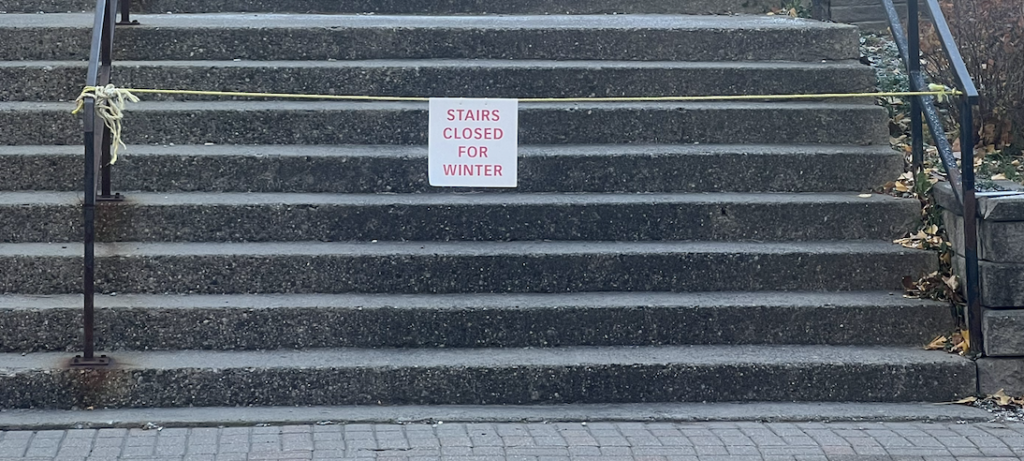
They do this to save money. Facilities personnel are admitting, through this signage, that they simply cannot keep all of our walkways clear. Well, if it's good for the goose, then it's good for the gander. It's time to apply the same principle to roadways -- shut down the unnecessary ones. And any walkways that are routinely shut down like this in Winter should be studied for permanent removal, too. Because if they're unnecessary in the Winter then they're very likely unnecessary in the Summer, Fall and Spring.
Do we have a serious budget issue at York? If so, then let's focus on making sure that all critical transportation surfaces are clear and safe all the time with the money that we have. Get rid of the unnecessary walkways and roadways while also building up a workforce and vehicle fleet that can maintain the surfaces that we actually need and use. Stop wasting money on private contractors, because we're simply not getting value for money.

James Andrew Smith is a Professional Engineer and Associate Professor in the Electrical Engineering and Computer Science Department of York University’s Lassonde School, with degrees in Electrical and Mechanical Engineering from the University of Alberta and McGill University. Previously a program director in biomedical engineering, his research background spans robotics, locomotion, human birth, music and engineering education. While on sabbatical in 2018-19 with his wife and kids he lived in Strasbourg, France and he taught at the INSA Strasbourg and Hochschule Karlsruhe and wrote about his personal and professional perspectives. James is a proponent of using social media to advocate for justice, equity, diversity and inclusion as well as evidence-based applications of research in the public sphere. You can find him on Twitter. You can find him on BlueSky. Originally from Québec City, he now lives in Toronto, Canada.
